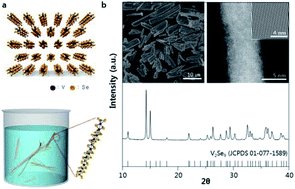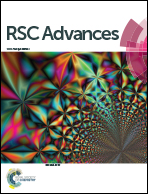Isolation of inorganic molecular chains from rod-like bulk V2Se9 crystal by liquid exfoliation
Abstract
We studied the optimum dispersion solvent for bulk V2Se9 material, which can be used as a new one-dimensional (1D) material, to separate into 1D chain units. Selected twelve solvents, which have different dielectric constants and surface tensions, were tested to exfoliate bulk V2Se9 into nano-scale chains. The atomic level (∼1 nm, mono-chain) exfoliation of V2Se9 was performed using acetone as the solvent. The dispersion concentration was high in solvents having medium dielectric constants ranging from 20 to 40 with surface tensions ranging from 25 to 35 mJ m−2. This result is similar to the dispersion results of previous transition metal dichalcogenides (TMDCs) such as MoS2, WS2, MoSe2, MoTe2, TaSe2, NbSe2, and NiTe2, indicating that the V2Se9 material and its dispersion to 1D units can be expected to play an important role in opening opportunities for new low-dimensional material studies.



 Please wait while we load your content...
Please wait while we load your content...